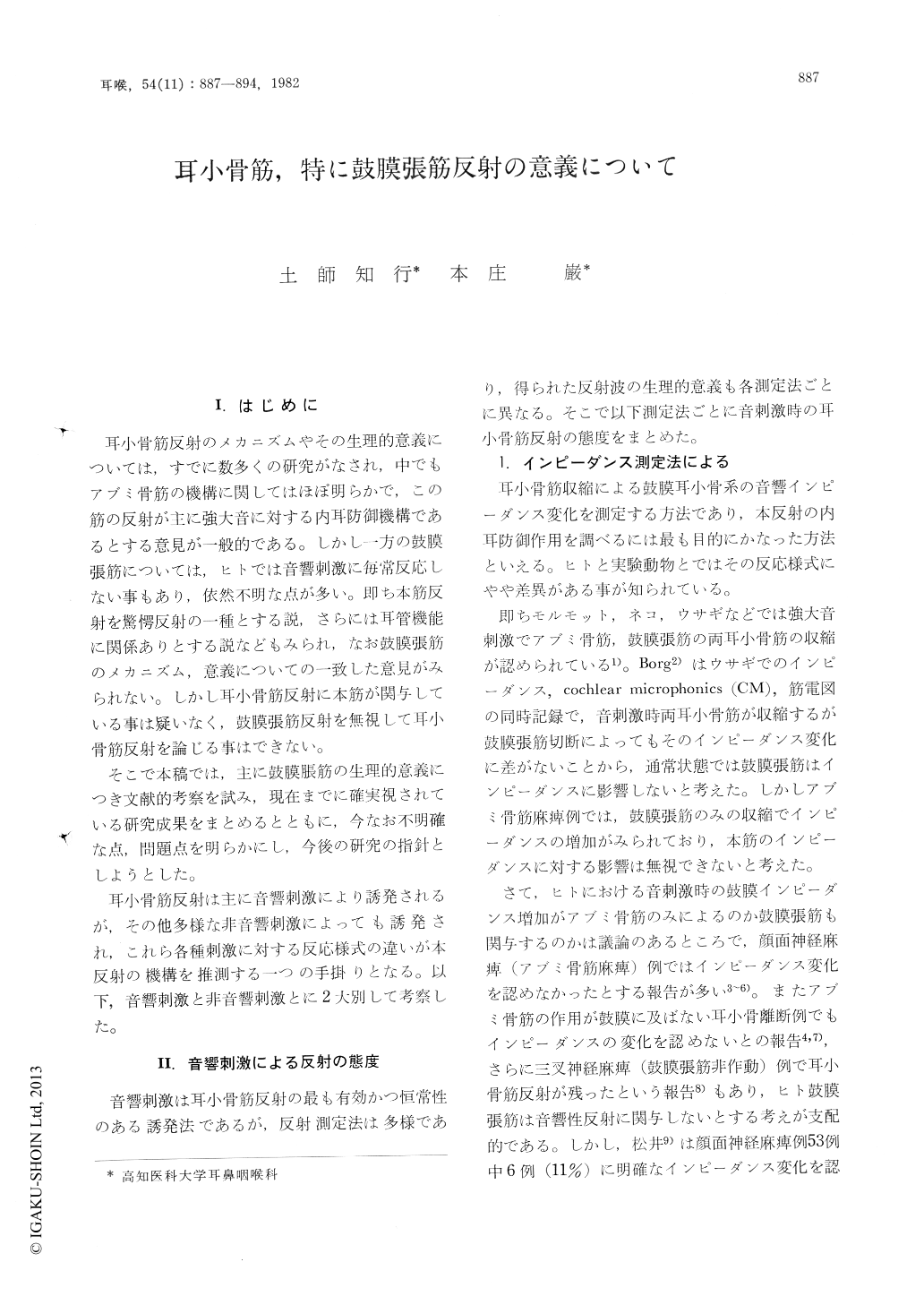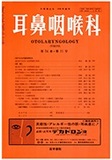Japanese
English
- 有料閲覧
- Abstract 文献概要
- 1ページ目 Look Inside
I.はじめに
耳小骨筋反射のメカニズムやその生理的意義については,すでに数多くの研究がなされ,中でもアブミ骨筋の機構に関してはほぼ明らかで,この筋の反射が主に強大音に対する内耳防御機構であるとする意見が一般的である。しかし一方の鼓膜張筋については,ヒトでは音響刺激に毎常反応しない事もあり,依然不明な点が多い。即ち本筋反射を驚愕反射の一種とする説,さらには耳管機能に関係ありとする説などもみられ,なお鼓膜張筋のメカニズム,意義についての一致した意見がみられない。しかし耳小骨筋反射に本筋が関与している事は疑いなく,鼓膜張筋反射を無視して耳小骨筋反射を論じる事はできない。
そこで本稿では,主に鼓膜脹筋の生理的意義につき文献的考察を試み,現在までに確実視されている研究成果をまとめるとともに,今なお不明確な点,問題点を明らかにし,今後の研究の指針としようとした。
Though a considerable number of study on the reflex of the tensor tympani muscle has been reported, its role in the middle ear muscle reflex has not been fully understood, espesially in human being. In order to reveal the agreement and controversy on this problem and to find out any cue for further investigation in this field, we revieweda large number of the literature related to thit muscle.
They are summarized as follows : 1) The tensor tympani muscle contracts not only by acoustic stimulation but also by several kinds of non-acoustic stimulation. 2) The eardrum moves inward when it contracts. 3) The tensor tympani muscle much less influences the acoustic impedance than the stapedius muscle. 4) The reflex is accepted as a part of general startle reflex. 5) There are several theories on the physiological meaning of the tensor tympani muscle reflex, for instance, protection of the inner ear from loud noise, filter of sound, pump-like function to help tubal ventilation and so on.
But the evidences which support those hypotheses have not yet been available. New method and new idea to approach to the physiology of ther muscle seems to be necessary to solve this rather complexed problem.

Copyright © 1982, Igaku-Shoin Ltd. All rights reserved.


